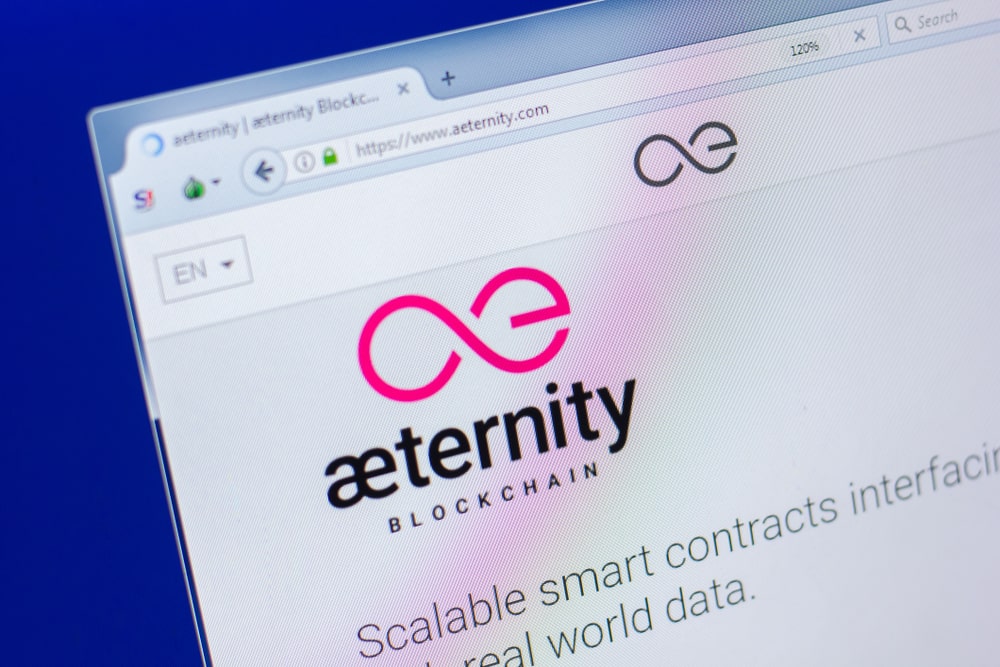Interview: Aeternity Team Talks ‘Roma’ Public Blockchain Launch

Aeternity launched the first live implementation of the Aeternity blockchain from a stunning villa on the outskirts of Rome, and CCN.com went to speak with the team and learn about the scope of the project.
Aeternity is a smart contract and decentralized applications development platform founded by Yanislav Malahov whose early contributions to the Ethereum project lead to the creation of smart contracts and other features. Malahov collaborated with Vitalik Buterin before Ethereum even had a name, and ended up moving away from the project to work on the Aeternity platform instead.
Aeternity
To begin with, I spoke with Marion Vogel, the project Director, and Nikola Stojanow, the CBDO. Vogel explained how Roma was a step forward in decentralization, putting control of Aeternity in the hands of the community.
“With the implementation of Roma it’s out there, it’s decentralized – it’s basically everyone’s project now.”
Developers are now free to write their own applications in the Sophia programming language and launch them live on the blockchain, which has been audited by Swiss cybersecurity firm cnlab and found to be fit for the purpose.
Vogel went on to state one of the project goals as making blockchain something anyone can use easily, a major pain point in the sphere at the moment, but described the main pain point of the blockchain as scaling. Aeternity uses state channels among other features to solve this problem, allowing smart contracts to execute privately off-chain and only require an on-chain transaction in the case of a dispute.
The pair praised their decentralized applications team who are creating programs they refer to as “Aepps,” describing this as a major aspect of the project. Stojanow was excited to talk about the Base aepp , a mobile DApp that enables users to browse other decentralized applications easily from one location, while Vogel laughingly described her favourite aepp as the Beer Token aepp which was used in Berlin’s re:publica conference to distribute 10,000 free beers.
She stated that the simplicity and practical nature of the aepp helped people understand how decentralized blockchain applications can be used, and added: “Who doesn’t like free beer?”
The Philosophy – Aeternity as a Movement
Vladislav Dramaliev, Head of Digital Marketing, tentatively described the philosophy of the platform in a single sentence: “Rethink trust, empower the 99%.”
Dramaliev said he supported the idea that people should be more independent and responsible for their own data, otherwise they would always be made use of by major companies, but stated that one of the main questions in blokchain was whether most people even wanted the freedom and responsibility even afforded to them by the new technology.
“Aeternity could be called a project, but we tend to refer to it as a movement of like-minded people who believe that the future should be built on a different type of infrastructure that provides more opportunities, that transcends borders, and basically unleashes value creation on a global scale.”
Dramaliev added that anyone can learn to use the platform to improve their own well-being through value transfers and “unstoppable” applications, and that this was something the team strive to facilitate.
The Founder
To fully grasp the technical details and direction of the project, it was important to sit down with Yanislav Malahov, the project founder, and Emin Henri Mahrt, the COO.
Aeternity uses state channels and a bespoke consensus solution to achieve what seems to be an efficient and scalable model. Most processes are handled privately off-chain, something which I was concerned could impact transparency. The team said that instead of congesting the blockchain with every process automatically, the only processes that are necessary for auditing are those in dispute.
If two parties disagree on the outcome of a smart contract arrangement, the processes are fully auditable, and the results of the audit will be published on the blockchain, allowing for both scalability and transparency. Mahrt described a real-world example as someone betting on a video game high score but submitting high score results from the wrong day in the hope of cheating — the dispute could be handled interpersonally, but if neither side can agree it’s a case of having an Oracle read the results and determine whether the timestamps match, with the result then published on-chain.
Malahov and Mahrt described the consensus algorithm, explaining that Aeternity uses the Bitcoin-NG consensus algorithm paired with the Cuckoo Cycle hashing algorithm. Aeternity is mined using Decentralized RAM instead of GPUs or CPUs, which increases efficiency and doesn’t require or even support specialized equipment like ASIC miners. One block is mined every three minutes — graph-theory problems are solved by miners who then become leaders and can publish micro blocks for a time.
The system sounds complex, and it is. The founder and COO both stressed the importance of blockchain education and stated that the project intends to fund education programs and issue grants to help further adoption and innovation in the space.
“Our foundation will suport independent researchers and computer scientists as well as social and economic scientists to work on solutions which are related to blockchain technology, and we will also suport or give out student grants to students who want to go in this direction,” says Malahov.
Featured Image from Shutterstock